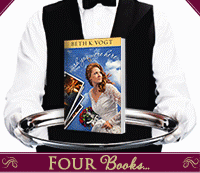
Today the spotlight shines on.....................Charles Lassone
Maureen Lang is tackling one of my favourite times in history in her latest book, Look to the East - the era that was World War I. It is fascinating because of the sacrifices made by so many men and women and the sheer immensity of the tragedy that world endured.
Maureen has provided a really interesting insight into her male lead, Charles Lassone which I am sure you will enjoy. Over to you, Maureen:~
Since the hero from Look to the East was one of my favorite characters to work with, I’ll be talking mainly about him today – and grateful for the opportunity to do so!
Brief physical description of your main character
That’s easy! Look to the East takes place at the outbreak of the First World War (1914). In the course of the story, my hero Charles Lassone refers to the physical description of himself on his passport. At the time, photos were not mandatory on such documents, and Charles had so many visas from various travels that he hardly had room for a photo even if such a thing had been required. So he had only a written physical description, which was as follows:
Charles Lassone refers to the physical description of himself on his passport. At the time, photos were not mandatory on such documents, and Charles had so many visas from various travels that he hardly had room for a photo even if such a thing had been required. So he had only a written physical description, which was as follows:
Height six foot one, weight one hundred ninety pounds, hair blond, eyebrows brown, eyes blue, face long, chin, square, forehead low, nose prominent. He used to chafe about the “prominent” nose, wondering if the clerk thought it too large for his face, but since the document rarely demanded more than a glance he’d mostly forgotten the physical description was there.
Personally, I imagined him to look a bit like Jude Law, but with blond hair and brown brows. And of course with a sometimes haughty but sometimes insecure look on his face. Jude Law has that endearing quality about his face, the ability to look insecure and still appear heroic.
Strengths and weaknesses
Being from a wealthy family, Charles Lassone has been well educated, given ample opportunity to explore his strengths—but only as they relate to fun and leisure. He’s traveled the world, sailed in regattas, and has many influential friends. But when war breaks out, he realizes just how worthless is the knowledge he possesses. Who cares how many parties are on his calendar when the freedom to enjoy such a thing is threatened?
But when war breaks out, he realizes just how worthless is the knowledge he possesses. Who cares how many parties are on his calendar when the freedom to enjoy such a thing is threatened?
Charles realizes what a waste his self-indulgent lifestyle has been, and wants to make himself worthy not only of his self-respect, but for the respect of the woman he comes to love.
Quirk (if any)
In the beginning of the story, poor Charles loses his motorcar to French soldiers who commandeer it for use in the French army. He is able to remove his personal belongings — totaling one suitcase. During the course of the next couple of chapters, that suitcase becomes a sort of security blanket for him. The one item that connects him to the way life used to be: so easy, so carefree. Now it’s a stool for him to sit on by the side of the road, a pillow for him at night when he sleeps on the hard ground, a shield from the rain. It’s the only possession he has left, and one he refuses to give up very easily, at least before the transformation of his character begins.
 Emmy Rossum as Juliette
Emmy Rossum as Juliette
Your inspiration for the character
Look to the East was inspired by the actual historical account of an occupied town during the First World War, and specifically of Robert Digby, as told in the non-fiction book by Ben Macintyre called The Englishman’s Daughter. Although my character and Digby ended up not having all that much in common, I was initially inspired by the story of this man who takes refuge in a feuding little town in France. He’s forced to hide from the occupying German army and during the course of his stay falls in love with one of the villagers. Unfortunately for Mr. Digby, his was a tragic end—which probably inspired me to write Look to the East. I wanted to revise history for a happy ending!
Background to the story
I’ve always been intrigued by the First World War era. It positively reeks drama, from all of the familial connections between European world powers that ended up at war against one another to the world-wide influenza epidemic to the Christmas truce and the Lost Battalion and on to many other stories. Beside all that, the time period itself is a fascinating blend of historical and contemporary life, giving it an almost nostalgic aura.
truce and the Lost Battalion and on to many other stories. Beside all that, the time period itself is a fascinating blend of historical and contemporary life, giving it an almost nostalgic aura.
Which is perhaps why I’ve read so many books from this time setting. Mr. Macintyre’s book was a favorite, because it’s written so engagingly and had so many details of what daily life under an occupation was like. In fact, when I traveled to Europe to research the area where my book would have taken place, I intended to make a point to look for Robert Digby’s gravesite. Sadly, he was betrayed and handed over to the Germans, shot by a firing squad.
I was also visiting Belgium, where Book Two in the series takes place. An online contact had recommended a wonderful Bed and Breakfast for me in Poelkapelle, Belgium, where my husband and I ultimately stayed. When we arrived there, our hostess who knew I was researching a book said how lucky I was to be there at the same time a war tour guide was staying with her. Personally, I don’t believe in luck. The timing of this and many other events on that trip was God’s hand, making it so much easier for me to follow His guidance about writing this book.
where my husband and I ultimately stayed. When we arrived there, our hostess who knew I was researching a book said how lucky I was to be there at the same time a war tour guide was staying with her. Personally, I don’t believe in luck. The timing of this and many other events on that trip was God’s hand, making it so much easier for me to follow His guidance about writing this book.
When I met the war tour guide we chatted about some of the First World War highlights. I mentioned my book was basically a romance with the war as a backdrop and he said I absolutely must know the story of a man who was caught behind the lines and fell in love. . . Before he even finished introducing the story, I said, “Oh, Robert Digby! His story actually inspired some of my own story.”
Because of that conversation, the tour guide was able to give me explicit directions to not only Mr. Digby’s gravesite but also to the site where a plaque displays the spot he was shot by firing squad. And let me tell you, neither spot was on an y tour guide lists for the general public. I’m certain I wouldn’t have found them had I not been “lucky” enough to meet this tour guide with a passion for World War One detail.
y tour guide lists for the general public. I’m certain I wouldn’t have found them had I not been “lucky” enough to meet this tour guide with a passion for World War One detail.
But, as I said, Mr. Digby and my hero Charles have limited similarities. The biggest difference is in their endings. I’m happy to share with you that Charles has a far happier end—but not until after surviving quite a few harrowing experiences. How else was my character to go from something near a wastrel to a hero worthy of my heroine?
Thank you so much, Maureen. I am really looking forward to reading this book (look for my review at TitleTrakk soon) and the rest of the series.

On Monday, I will be spotlighting Maggie Montgomery & Connor Blake from Jenny B Jones' debut adult novel Just Between You and Me ~ without a doubt, one of my top reads for 2009.
Brief physical description of your main character
That’s easy! Look to the East takes place at the outbreak of the First World War (1914). In the course of the story, my hero
 Charles Lassone refers to the physical description of himself on his passport. At the time, photos were not mandatory on such documents, and Charles had so many visas from various travels that he hardly had room for a photo even if such a thing had been required. So he had only a written physical description, which was as follows:
Charles Lassone refers to the physical description of himself on his passport. At the time, photos were not mandatory on such documents, and Charles had so many visas from various travels that he hardly had room for a photo even if such a thing had been required. So he had only a written physical description, which was as follows:Height six foot one, weight one hundred ninety pounds, hair blond, eyebrows brown, eyes blue, face long, chin, square, forehead low, nose prominent. He used to chafe about the “prominent” nose, wondering if the clerk thought it too large for his face, but since the document rarely demanded more than a glance he’d mostly forgotten the physical description was there.
Personally, I imagined him to look a bit like Jude Law, but with blond hair and brown brows. And of course with a sometimes haughty but sometimes insecure look on his face. Jude Law has that endearing quality about his face, the ability to look insecure and still appear heroic.
Strengths and weaknesses
Being from a wealthy family, Charles Lassone has been well educated, given ample opportunity to explore his strengths—but only as they relate to fun and leisure. He’s traveled the world, sailed in regattas, and has many influential friends.
 But when war breaks out, he realizes just how worthless is the knowledge he possesses. Who cares how many parties are on his calendar when the freedom to enjoy such a thing is threatened?
But when war breaks out, he realizes just how worthless is the knowledge he possesses. Who cares how many parties are on his calendar when the freedom to enjoy such a thing is threatened?Charles realizes what a waste his self-indulgent lifestyle has been, and wants to make himself worthy not only of his self-respect, but for the respect of the woman he comes to love.
Quirk (if any)
In the beginning of the story, poor Charles loses his motorcar to French soldiers who commandeer it for use in the French army. He is able to remove his personal belongings — totaling one suitcase. During the course of the next couple of chapters, that suitcase becomes a sort of security blanket for him. The one item that connects him to the way life used to be: so easy, so carefree. Now it’s a stool for him to sit on by the side of the road, a pillow for him at night when he sleeps on the hard ground, a shield from the rain. It’s the only possession he has left, and one he refuses to give up very easily, at least before the transformation of his character begins.
 Emmy Rossum as Juliette
Emmy Rossum as JulietteYour inspiration for the character
Look to the East was inspired by the actual historical account of an occupied town during the First World War, and specifically of Robert Digby, as told in the non-fiction book by Ben Macintyre called The Englishman’s Daughter. Although my character and Digby ended up not having all that much in common, I was initially inspired by the story of this man who takes refuge in a feuding little town in France. He’s forced to hide from the occupying German army and during the course of his stay falls in love with one of the villagers. Unfortunately for Mr. Digby, his was a tragic end—which probably inspired me to write Look to the East. I wanted to revise history for a happy ending!
Background to the story
I’ve always been intrigued by the First World War era. It positively reeks drama, from all of the familial connections between European world powers that ended up at war against one another to the world-wide influenza epidemic to the Christmas
 truce and the Lost Battalion and on to many other stories. Beside all that, the time period itself is a fascinating blend of historical and contemporary life, giving it an almost nostalgic aura.
truce and the Lost Battalion and on to many other stories. Beside all that, the time period itself is a fascinating blend of historical and contemporary life, giving it an almost nostalgic aura.Which is perhaps why I’ve read so many books from this time setting. Mr. Macintyre’s book was a favorite, because it’s written so engagingly and had so many details of what daily life under an occupation was like. In fact, when I traveled to Europe to research the area where my book would have taken place, I intended to make a point to look for Robert Digby’s gravesite. Sadly, he was betrayed and handed over to the Germans, shot by a firing squad.
I was also visiting Belgium, where Book Two in the series takes place. An online contact had recommended a wonderful Bed and Breakfast for me in Poelkapelle, Belgium,
 where my husband and I ultimately stayed. When we arrived there, our hostess who knew I was researching a book said how lucky I was to be there at the same time a war tour guide was staying with her. Personally, I don’t believe in luck. The timing of this and many other events on that trip was God’s hand, making it so much easier for me to follow His guidance about writing this book.
where my husband and I ultimately stayed. When we arrived there, our hostess who knew I was researching a book said how lucky I was to be there at the same time a war tour guide was staying with her. Personally, I don’t believe in luck. The timing of this and many other events on that trip was God’s hand, making it so much easier for me to follow His guidance about writing this book.When I met the war tour guide we chatted about some of the First World War highlights. I mentioned my book was basically a romance with the war as a backdrop and he said I absolutely must know the story of a man who was caught behind the lines and fell in love. . . Before he even finished introducing the story, I said, “Oh, Robert Digby! His story actually inspired some of my own story.”
Because of that conversation, the tour guide was able to give me explicit directions to not only Mr. Digby’s gravesite but also to the site where a plaque displays the spot he was shot by firing squad. And let me tell you, neither spot was on an
 y tour guide lists for the general public. I’m certain I wouldn’t have found them had I not been “lucky” enough to meet this tour guide with a passion for World War One detail.
y tour guide lists for the general public. I’m certain I wouldn’t have found them had I not been “lucky” enough to meet this tour guide with a passion for World War One detail.But, as I said, Mr. Digby and my hero Charles have limited similarities. The biggest difference is in their endings. I’m happy to share with you that Charles has a far happier end—but not until after surviving quite a few harrowing experiences. How else was my character to go from something near a wastrel to a hero worthy of my heroine?
Thank you so much, Maureen. I am really looking forward to reading this book (look for my review at TitleTrakk soon) and the rest of the series.

On Monday, I will be spotlighting Maggie Montgomery & Connor Blake from Jenny B Jones' debut adult novel Just Between You and Me ~ without a doubt, one of my top reads for 2009.
Relz Reviewz Extras
Character spotlight on Dilly and Hannah from My Sister Dilly
Visit Maureen's website and blog
Buy Maureen's books at Amazon and Koorong



































0 comments:
Post a Comment